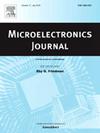UIC: A unified and scalable chip integrating neuromorphic computation and general purpose processor
IF 1.9
3区 工程技术
Q3 ENGINEERING, ELECTRICAL & ELECTRONIC
引用次数: 0
Abstract
Most SNN hardware implementations adopt a heterogeneous architecture consisting of CPUs and accelerators to achieve efficiency in neuromorphic computing. However, this architectural method encounters challenges like load imbalance, communication delays, and substantial demand for hardware resources. To address this issue, we build a unified model description framework and processing architecture, the unified integration core (UIC), which integrates neuromorphic computing (NC) and general-purpose computing (GPC), and conduct software and hardware co-design. By implementing a set of integration and transformation operations, UIC can support critical general purpose processor (GPP) and SNN operations with the same processing elements achieving significant area reduction and latency reduction over those of a naive implementation. A compatible communication infrastructure is proposed to enable homogeneous and heterogeneous scalability on a decentralized intra- and inter-core network. Several optimization methods are incorporated, including resource and data sharing, near-memory processing, and intra-/inter-core pipeline. Compared to the previous state-of-the-art works, UIC achieves high energy efficiency at 2.55 mJ/inference with a low latency of 18.4 ms. In terms of hardware resource consumption, LUTs, and FF hardware resources are reduced by 56% and 60%.
UIC:集成神经形态计算和通用处理器的统一可扩展芯片
大多数SNN硬件实现采用由cpu和加速器组成的异构体系结构来实现神经形态计算的效率。然而,这种体系结构方法遇到了诸如负载不平衡、通信延迟和对硬件资源的大量需求等挑战。为了解决这一问题,我们构建了统一的模型描述框架和处理架构,即集成神经形态计算(NC)和通用计算(GPC)的统一集成核心(UIC),并进行了软硬件协同设计。通过实现一组集成和转换操作,UIC可以支持关键的通用处理器(GPP)和SNN操作,使用相同的处理元素,实现比原始实现显著的面积减少和延迟减少。提出了一种兼容的通信基础设施,以实现在分散的核内和核间网络上的同构和异构可扩展性。采用了多种优化方法,包括资源和数据共享、近内存处理和核内/核间管道。与之前的先进技术相比,UIC实现了2.55 mJ/inference的高能效和18.4 ms的低延迟。硬件资源消耗方面,lut和FF硬件资源分别减少56%和60%。
本文章由计算机程序翻译,如有差异,请以英文原文为准。
求助全文
约1分钟内获得全文
求助全文
来源期刊

Microelectronics Journal
工程技术-工程:电子与电气
CiteScore
4.00
自引率
27.30%
发文量
222
审稿时长
43 days
期刊介绍:
Published since 1969, the Microelectronics Journal is an international forum for the dissemination of research and applications of microelectronic systems, circuits, and emerging technologies. Papers published in the Microelectronics Journal have undergone peer review to ensure originality, relevance, and timeliness. The journal thus provides a worldwide, regular, and comprehensive update on microelectronic circuits and systems.
The Microelectronics Journal invites papers describing significant research and applications in all of the areas listed below. Comprehensive review/survey papers covering recent developments will also be considered. The Microelectronics Journal covers circuits and systems. This topic includes but is not limited to: Analog, digital, mixed, and RF circuits and related design methodologies; Logic, architectural, and system level synthesis; Testing, design for testability, built-in self-test; Area, power, and thermal analysis and design; Mixed-domain simulation and design; Embedded systems; Non-von Neumann computing and related technologies and circuits; Design and test of high complexity systems integration; SoC, NoC, SIP, and NIP design and test; 3-D integration design and analysis; Emerging device technologies and circuits, such as FinFETs, SETs, spintronics, SFQ, MTJ, etc.
Application aspects such as signal and image processing including circuits for cryptography, sensors, and actuators including sensor networks, reliability and quality issues, and economic models are also welcome.
 求助内容:
求助内容: 应助结果提醒方式:
应助结果提醒方式:


